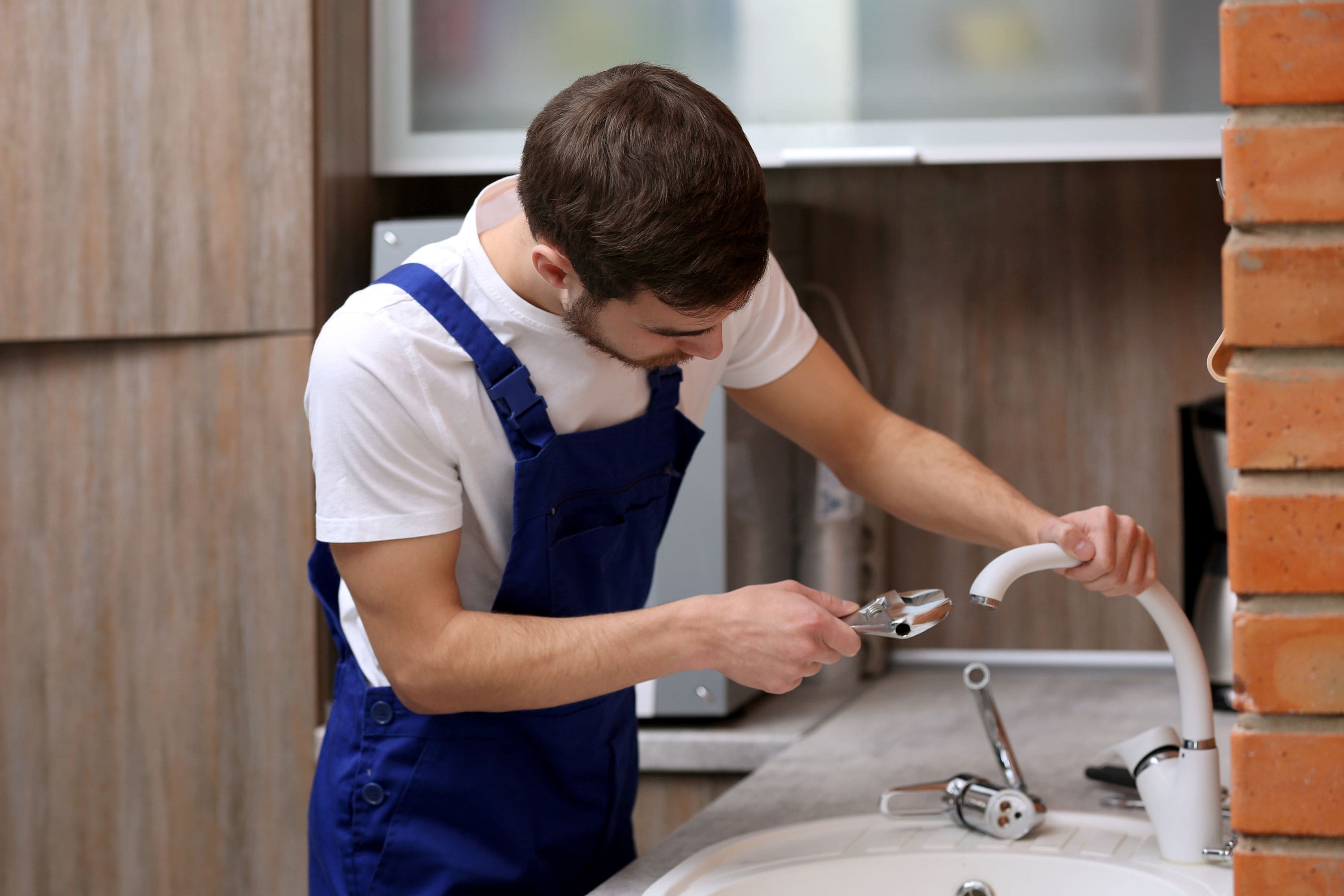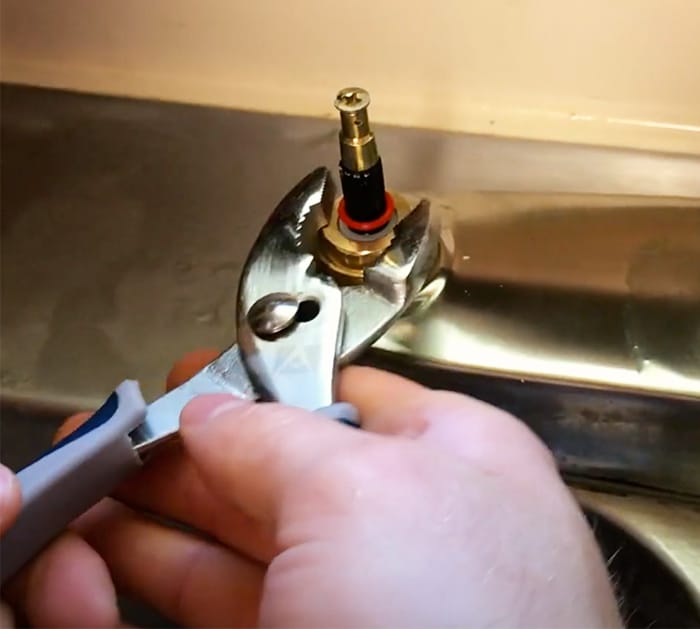Just how do you actually feel in relation to What Causes Leaky Faucets & How To Fix Them?

Dripping taps may look like a small trouble, however their impact surpasses just the annoyance of the noise. From drainage to incurring unnecessary monetary costs and wellness risks, ignoring a trickling faucet can cause various effects. In this article, we'll explore why it's essential to resolve this common family issue quickly and successfully.
Wastefulness of Water
Environmental Effect
Leaking taps add significantly to water wastage. According to the Epa (EPA), a single faucet leaking at one drip per secondly can waste more than 3,000 gallons of water per year. This not only strains water resources but likewise affects environments and wildlife depending on them.
Step-by-Step Overview to Repairing a Dripping Faucet
Devices Needed
Before trying to take care of a leaking faucet, collect the required devices, including an adjustable wrench, screwdrivers, substitute components (such as washers or cartridges), and plumber's tape.
Usual Faucet Issues and Their Solutions
Recognize the kind of tap and the particular problem creating the drip. Common issues consist of worn-out washing machines, rusty valve seats, or malfunctioning O-rings. Refer to producer guidelines or on-line tutorials for step-by-step guidance on repair services.
Financial Prices
Raised Water Bills
Beyond the environmental effect, leaking taps can pump up water expenses considerably. The gathered wastefulness with time equates into higher utility expenses, which can have been stayed clear of with prompt fixings.
Potential Property Damages
In addition, extended leaking can result in damage to fixtures and surfaces bordering the faucet. Water accumulation can trigger discoloration, corrosion, and even architectural concerns if left neglected, causing additional repair work costs.
Health and wellness Issues
Mold and Mildew Development
The constant presence of moisture from a trickling faucet creates a suitable environment for mold and mildew and mildew development. These fungi not just jeopardize indoor air high quality but additionally present health threats, especially for people with breathing problems or allergies.
Waterborne Conditions
Stagnant water in leaking taps can end up being a breeding place for bacteria and other virus, raising the risk of waterborne diseases. Pollutants such as Legionella microorganisms grow in stagnant water, potentially causing significant health problems when consumed or breathed in.
Do it yourself vs. Specialist Repair
Advantages and disadvantages of DIY Repair Service
While some may attempt to fix a dripping faucet themselves, do it yourself fixings include their own set of challenges. Without proper understanding and tools, do it yourself efforts can intensify the concern or result in incomplete repairs, prolonging the trouble.
Benefits of Working With a Professional Plumber
Hiring a professional plumber makes certain that the underlying cause of the dripping tap is dealt with effectively. Plumbings possess the competence and tools to identify and repair tap problems effectively, conserving time and decreasing the threat of more damages.
Ecological Duty
Specific Contribution to Conservation
Taking obligation for dealing with dripping taps straightens with broader efforts toward water preservation and environmental sustainability. Every individual's activities collectively make a significant influence on maintaining valuable resources.
Lasting Living Practices
By focusing on punctual fixings and taking on water-saving habits, people contribute to lasting living practices that profit both existing and future generations.
Safety nets
Normal Maintenance Tips
To prevent trickling faucets, carry out regular maintenance such as cleaning up aerators, inspecting for leakages, and replacing worn-out components quickly. Additionally, consider installing water-saving devices or upgrading to more efficient fixtures.
Importance of Prompt Repairs
Addressing leaking taps as quickly as they're seen prevents further water wastefulness and possible damage, eventually conserving both water and money in the long run.
Influence On Property Value
Perception of Well-Maintained Home
Maintaining a property in good condition, including addressing maintenance problems like trickling faucets, enhances its viewed worth and value among prospective buyers or lessees.
Influence on Resale Worth
Features with properly maintained plumbing components, including taps, command higher resale worths in the realty market. Attending to dripping faucets can add to a positive impact throughout home inspections and settlements.
Final thought
Dealing with a trickling faucet surpasses mere comfort; it's a vital step toward preserving water, minimizing economic prices, and safeguarding health and residential property. Whether through do it yourself fixings or professional assistance, doing something about it to fix dripping faucets is a small yet impactful means to advertise liable stewardship of sources and add to a healthier, much more sustainable future.
Why Are My Faucets Dripping (And Can I Fix it Myself)?
Causes of a Dripping or Leaking Faucet
Whether you’re hearing drops of water falling and hitting a sink, or noticing water ooze out from the base of the spout, you shouldn’t ignore a dripping or leaking faucet. And, the good news is, sometimes you can fix the problem yourself.
In this article, we’ll review a few common causes of dripping and leaky. We’ll also walk you through some basic ways to find the problem and handle it without calling anyone — and let you know when to call in a pro.
But, no matter what the cause, or whether you can handle it on your own, the sooner you address it, the better.
Each drip may be a tiny amount of water. But, they all add up quickly. According to the U.S. Geological Survey, one faucet losing one drop every 20 seconds — five a minute — wastes around a liter of water every day, and 173 gallons a year.
Add in more than one in your house, and it’s a lot of water to waste. So, we’ll help you get to the bottom of things quickly.
Four Reasons Your Faucet May Be Dripping
Aerator is Damaged or Unseated Valve Seat is Corroded O Ring is Loose or Worn Out Part of the Assembly is Loose Aerator is Damaged or Unseated
If you unscrew the end of your faucet, you’ll find the aerator. It’s the little stem piece with a screen on it that shuts off the water circulation.
If it’s damaged, or if it’s not sitting right, it will allow water to pass through.
Valve Seat is Corroded
Next is the valve seat, which is connected to the washer. If the washer wasn’t in place correctly, then it could have ground against the seat. Over time, this damages the valve seat.
The problem could also be corrosion: Over time, the part has worn out, and it’s now allowing water to pass through.
O Ring is Loose or Worn Out
Since the o ring is only a small rubber gasket, it’s a common reason why the faucet is dripping. You’ll find it at the base of the faucet, and it’s there to keep water from coming out where it’s not supposed to.
However, it’s common for the o ring to wear out over time. When it does, you’ll notice a drip.
Part of the Assembly is Loose
So far, we’ve looked at a few small, specific parts. But, the problem could be anywhere in the assembly if something’s out of place.
Even if a part isn’t damaged, over time, it may have become loose or dislodged. It could be the parts we mentioned, or the aerator at the tip of the faucet, the stem itself,
Can I Fix a Leaky Faucet Myself?
Depending on the problem, and how handy you are, there’s a chance you can fix a leaky faucet without calling a professional. But, you do run the risk of making the problem worse.
If it’s a small drip, you can certainly try a few troubleshooting tactics. We’ll walk you through them in a moment.
But, no matter what, your first step should be shutting off the water coming into the faucet. You should find a shutoff valve under the sink on the pipes leading to it. Turn each one clockwise until they close tightly.
Next, make sure you have the right tools for whatever you’re attempting. It’s tempting to make do with what you have. But, you need the right ones for a reason: You’re often dealing with small parts that can break if you handle them carelessly.
If you’re feeling confident, here are some places to start.
Items Near the Tip of the Faucet
A few of the parts we mentioned — particularly the valve seat and washer — are located at the tip of the faucet where the water comes out. They’re easy to access, making it a good place to start.
Check the O Ring
To check the o ring, you’ll need to take off the spout at the base. It’s easiest on kitchen sinks with long spouts, versus the smaller, bulkier base on most bathroom sinks.
Either way, this can be tricky, so do it carefully and don’t force anything. If it’s not coming right off, you’re much better off calling in a pro than possibly breaking something.
For a kitchen sink, there’s usually a nut or coupling assembly at the base of the spout. These often slide off easily without using any tools.
Once you’ve disassembled those parts, gently but forcefully twist off the spout.
Then, you can see the o rings. There should be two of the rubber gaskets on the base. If they look worn or damaged, replace them, and see if that solves the problem.

I'm very curious about Should I Repair or Replace a Leaky Faucet? and I really hope you enjoyed reading the new blog post. Sharing is good. Helping others is fun. Thank you so much for going through it.